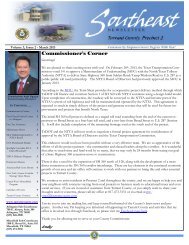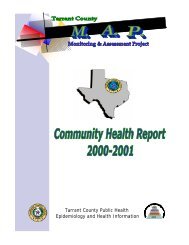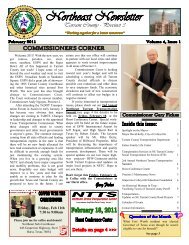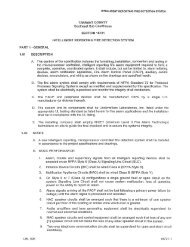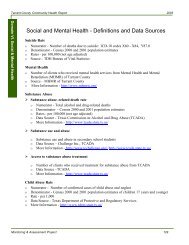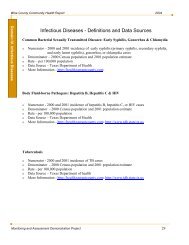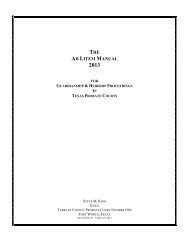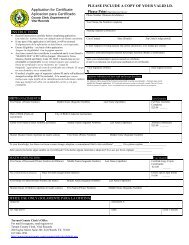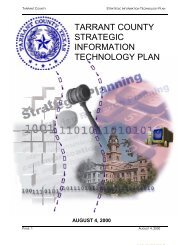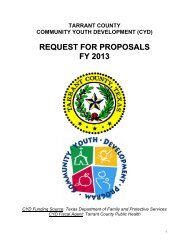MAPP Handbook - The National Association of County and City ...
MAPP Handbook - The National Association of County and City ...
MAPP Handbook - The National Association of County and City ...
You also want an ePaper? Increase the reach of your titles
YUMPU automatically turns print PDFs into web optimized ePapers that Google loves.
Additional tips for conducting the LPHSA<br />
• Recruit all system partners that are appropriate to assess the public health<br />
system. If the entire system is well-represented, then responses will better<br />
reflect current activities. Work closely to ensure their full involvement in the<br />
assessment process.<br />
• At the beginning, review the methods <strong>and</strong> process with participants. Allow the<br />
group to make suggestions regarding the best way for moving through the<br />
instrument efficiently.<br />
• Design a process that keeps the discussion moving <strong>and</strong> focused on the content<br />
<strong>of</strong> the st<strong>and</strong>ards, rather than getting “bogged down” in the questions.<br />
• Track ideas, comments, <strong>and</strong> potential solutions so that these ideas can be<br />
revisited later.<br />
• Think about creative ways to reduce paper shuffling. For example, the<br />
instrument can be projected from a laptop to an overhead screen so that all<br />
participants can follow the questions easily.<br />
• Consider sharing only the model st<strong>and</strong>ards to keep the discussion focused on<br />
the overall activities being conducted in the system. <strong>The</strong> facilitator <strong>and</strong> recorder<br />
can use copies <strong>of</strong> the full instrument to prompt discussion <strong>and</strong> track responses<br />
to questions. Or, voting on the measures can occur.<br />
• Consider the pros <strong>and</strong> cons <strong>of</strong> using different sets <strong>of</strong> individuals to respond to<br />
different sections <strong>of</strong> the instrument. A process using one large group will<br />
promote maximum cross-fertilization <strong>of</strong> ideas <strong>and</strong> sharing <strong>of</strong> information. If small<br />
groups are used, be sure that there is a core group present to ensure consistency.<br />
Also, present key ideas or discussion points back to the entire group, so that all<br />
participants become informed about <strong>and</strong> make comments on all sections.<br />
48



